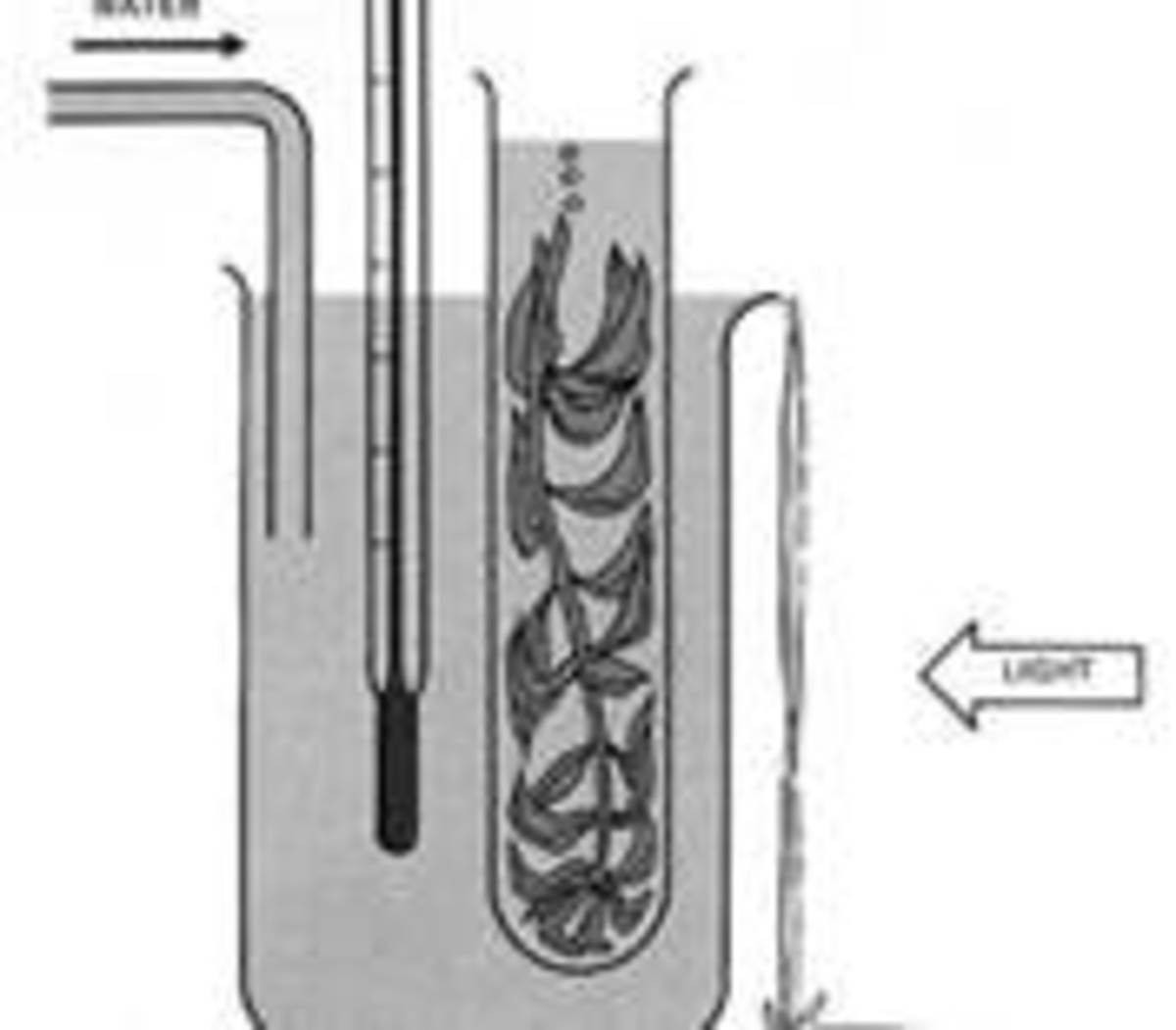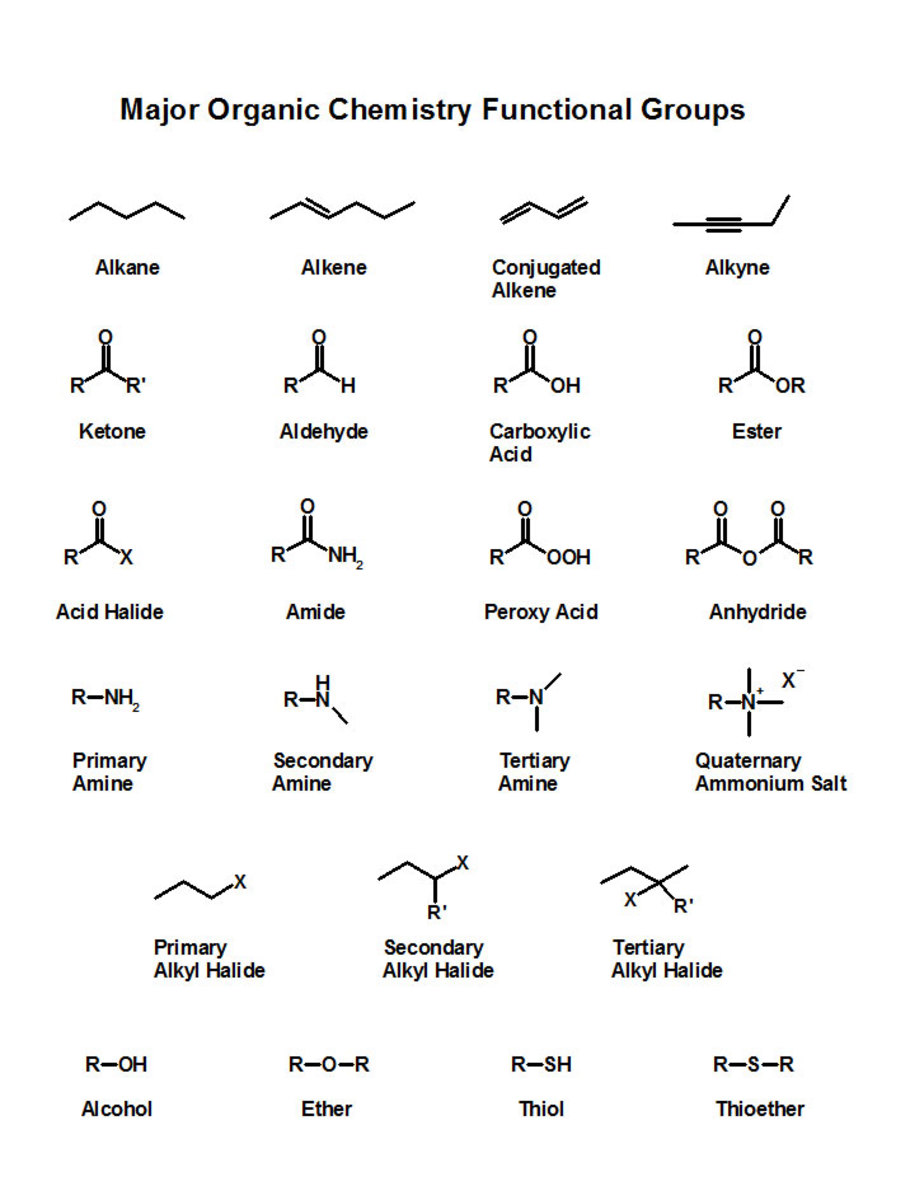Photosynthesis Rethought
More than 500 million years ago, land plants evolved on Earth’s surface and through the process of photosynthesis, paved the way for the further evolution of animals and eventually the most primitive of humanoids. At its most basic level, photosynthesis is the production of glucose and oxygen from water, sunlight, and carbon dioxide. Almost every sixth grader in the American public school system can recite this definition of photosynthesis, but what most sixth graders—and most people too—don’t realize is that photosynthesis is not a very efficient process at all. Photosynthesis, the mechanism by which we obtain the air in our lungs, is inefficient.

Modern chloroplasts, not to be confused with their primitive ancestors, the cyanobacteria, use chlorophyll to absorb incoming sunlight and then transform this radiant energy into ATP. The ATP is then used to create glucose from carbon dioxide and water molecules in a series of reactions called the light-independent reactions. During this process, the cell splits water molecules, using it to help transform light energy to ATP, but more importantly to us, the byproduct produced is oxygen gas. This is, without delving into the intricacies of this biochemical reaction any further, essentially how plants produce glucose. On paper, it sounds efficient, but in reality, only 10% of the sunlight that strikes the leaf of a plant is used in photosynthesis. In comparison, roughly 65% of the energy produced by gasoline in cars is given off as heat, which actually can cause the engine to overheat and thus necessitates the circulation of liquid coolant.
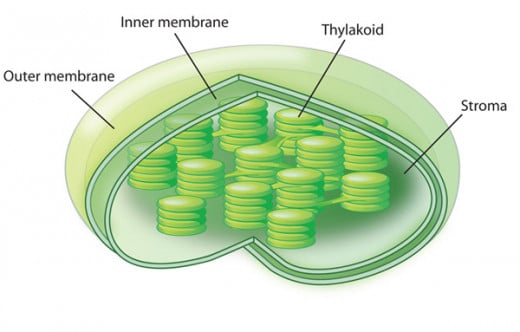
The inefficiency of photosynthesis is evident in the green hue of most leaves. Chlorophyll absorbs all other colors of visible light, but reflects “green” light, which induces our eyes to perceive the color of leaves as green. On a tangential note, the colors created and reflected are merely wavelengths of a different amplitude and frequency. Leaves are unable to absorb this certain wavelength, which reduces the overall efficiency of photosynthesis.
Which US university do you consider the most scientifically progressive?
In a new study, a team of chemical engineers at MIT attempted to heighten the effectiveness of photosynthesis by introducing carbon nanotubes, which function quite well in the absorption of sunlight, to living plants. Arabidopsis thaliana plants absorbed the carbon nanotubes and transported these nanotubes through the plant’s internal vascular system to the organelles known as chloroplasts. Scientists were able to determine that the nanotubes had been successfully implanted when the leaves of the plant turned bright orange, indicative of the red-orange coloring of the nanotubes. Photosynthesis rates with chloroplasts imbedded with these carbon nanotubes increased by three times in comparison to plants without the nanotubes.
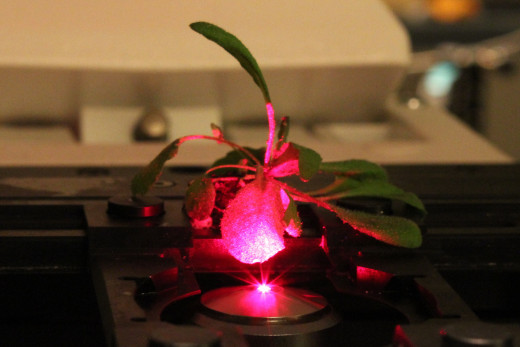
Empowered by the initial success of their experiment, scientists have high hopes for the new technology, even for applications beyond the immediate enhancement of one of life’s oldest processes. Giraldo, a scientist on the team, predicted that the nanotubes could be used as “biochemical detectors for monitoring environmental conditions in cities, crop fields, airports or high-security facilities” based on their sensitivity to nitric oxide.In this regards, the modified plant could serve as a versatile warning device to detect explosives.
A short video about carbon nanotubes
Scientists at the University of Arkansas have taken the research one step farther by embedding the nanotubes within tomato seeds. As seen in the accompanying figure, the rightmost plant has clearly experienced more growth and has a higher germination percentage than the control, which lacks the nanotubes. The carbon nanotubes facilitated the movement of water from the soil to the seeds. Additionally, during this experiment, scientists tried to determine possible ill effects of the insertion of these nanotubes, but their results have not been concluded.
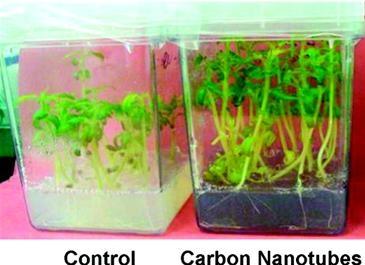
With a rapidly growing world population that is projected to reach eight billion by 2030, scientists have recognized the looming need to improve food production. Genetically modified organisms, commonly referred to as GMOs, have received large publicity of late from both advocates who cite larger and healthier vegetables as well as critics who prefer not to tamper with nature’s genes. Now, however, a different alternative is possible: the addition of carbon nanotubes into plants will facilitate the absorption of sunlight and ultimately increase the efficiency of photosynthesis.

